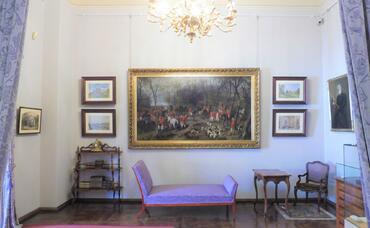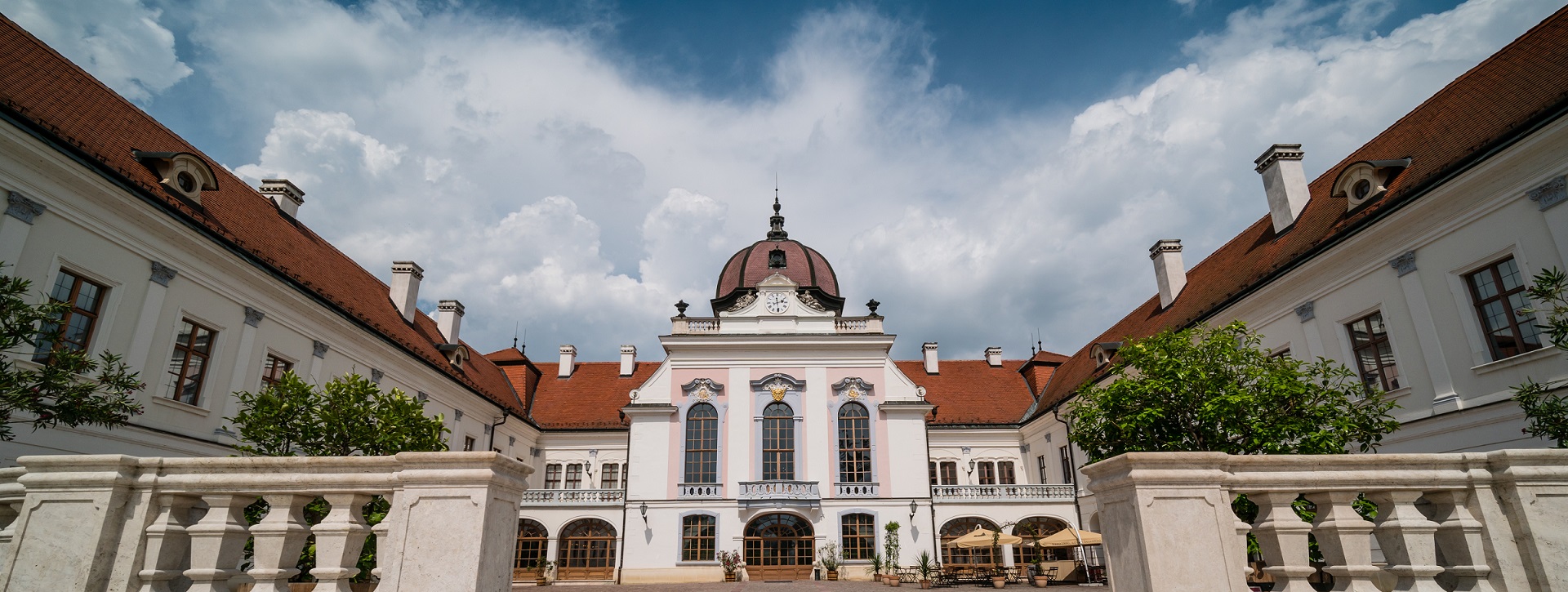

The permanent exhibition of the Palace comprises 31 rooms. In the beautifully restored rooms, visitors can learn about the complete history of the palace, from the family of the builder Grassalkovich to the royal summer residence to our own times.
In the southernmost wing of the Palace, Count Antal Grassalkovich II (1734–1794) had a theatre auditorium constructed between 1782 and 1785. 24.5 m long, 8 m wide and 9.5 m high, the space resulted from making the formerly 3-storey wing into one. The walls were decorated with Neo-classical, late Baroque paintings. The theatre was in operation only when the Count was in residence at Gödöllő.
Antal Grassalkovich I had the riding hall built on the south side of the palace in the middle of the 18th century. Because of Queen Elisabeth’s passion for riding, it was later transformed into a man?ge, with mirrors on all of its walls.
From the 1950s the riding hall was used by the Soviet army.
In the spring of 1944, the Royal Castellanship of Buda decided to have a bunker constructed for Regent Miklós Horthy, his family and his immediate entourage in Queen Elizabeth’s Garden. The building work was supervised by the Ministry of Home Defence and thus the necessary materials were procurable despite the ongoing wartime conditions.
Antal Grassalkovich I acquired Gödöllô and the neighbouring settlements in a gradual fashion between 1723 and 1748. Gödöllô, situated in the valley of the Rákos brook and having favourable natural endowments, was chosen to be made the centre of this area that was now unified in Antal Grassalkovich I’s possession. Parallel to the construction of the palace, plans were drawn up to consciously develop the settlement on a large scale.
Located around 200 metres from the Palace, the Kinghill pavilion is the only remaining building in the Palace park which dates from the Baroque period. It was Antal Grassalkovich I who had the hexagonal pavilion built in the 1760s. 54 oil paintings depicting Hungarian leaders and kings were incorporated into the panelled walls of the pavilion. The majority of the pictures have been destroyed or have disappeared and in the 1980s, only the bare walls were left standing. The building was reconstructed in 2002. The set of pictures was re-created by means of advanced photographic technology in 2004, and since then the pavilion may be visited on guided tours.
The palm house in the upper park, which consists of two wings, was built in 1870, in the times of Queen Elizabeth. It was a well-equipped, modern construction with an iron framework modelled on Austrian designs. Beside it there was a space for hotbeds and dwellings for the gardeners. In 1895, heatable greenhouses were added. From 1950, the palace was used as a barracks for Soviet troops.